Introduction
In Huntington County, there are currently four (4) active regional sewer districts (RSDs) and three (3) municipal owned operations operating in close proximity to each other. The effort of each district is an important component for protecting both natural resources and public health from man-made pollution. Properly done, such efforts are an important facet for marketing infrastructure and clean waterways that ultimately promote investment and development. In this regard the services each district provides have an impact well beyond their actual customer base.
In Huntington County, the city of Huntington and others draw their municipal water supply from the Upper Wabash Basin aquifer. To protect drinking water, another important mission for RSDs, there are Wellhead Protection Programs in place from IDEM. Industrial waste can contaminate aquifers but also septic systems. In Huntington County, residents on septics must meet requirements identified in County Ordinances and Indiana Rules such as 410 IAC 6-8.2.
Sewer districts typically operate on a model composed of two revenue streams where, firstly, residents pay for their sewage to be treated and, secondly, residents pay on the bond that financed the initial sewer infrastructure. Rates should consider the upkeep, maintenance and replacement of various components of the infrastructure. Rates can be kept to a minimal by exploiting economies of scale, proper asset management, and maximizing operational efficiencies. To this end, BCS will perform a study to ascertain the feasibility of consolidating wastewater systems in Huntington County to achieve rate control or reductions.
Bippus, Huntington Rural RSD, Dawn Lakes RSD and Norwood RSD are the four active RSDs. The Arlington Regional Sewer District has been dissolved since it has completed it’s debt obligation and turned the infrastructure over to the village of Roanoke. Incorporated cities and towns of Huntington County include the City of Huntington, the Town of Andrews, the Town of Markle, Town of Mount Etna, Town of Roanoke and Town of Warren.
FINANCIAL COMMITMENTS: Over the past 10 years, the Huntington County Commissioners have committed nearly half a million dollars to the sewer districts of the county. Additional funding requests for various infrastructure needs are anticipated in the future as noted in meeting minutes from 2/18/2019 commissioners meeting and from offline discussions regarding infrastructure concerns in all of the RSDs.
Huntington County Commissioners
CEDIT / LIT COMMITMENTS TO WATER/SEWER DISTRICTS (10 years)
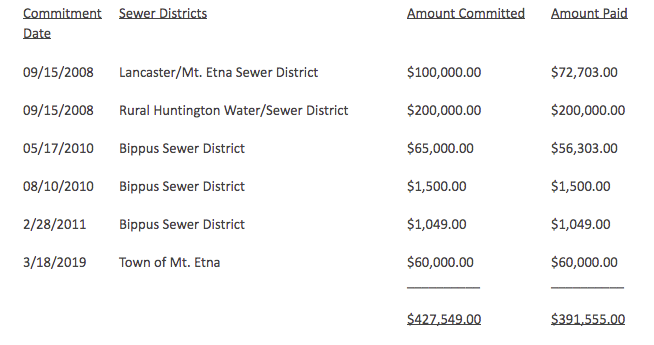
Minutes of the Meeting of 2/18/2019 (no commitment was made):
IN THE MATTER OF DISCUSSION
Norwood Regional Water and Sewer District
Andrews Clerk-Treasurer Laura Dillon, Andrews Utilities Superintendent Colin Bullock, Office Manager Stephanie Popplewell and Norwood Regional Water and Sewer District Board Member Jeff Shoup appeared before the Commissioners to update them on the current status of the Norwood Regional Water and Sewer District. Laura informed the Commissioners that a large portion of the district’s revenue was coming from Norwood Nursing and Rehabilitation Center, which is now closed. Laura and Colin expressed their concerns about financing future improvements, maintenance and repairs for water and sewer equipment within the district. The Commissioners and the district’s representatives discussed several financing options that might be available.
Investigated entities for this report include the Huntington Rural RSD, Dawn Lakes RSD, Bippus RSD, Norwood RSD. The water and sewer municipality owned and managed by the Town of Mt. Etna was also reviewed for future consideration
Overview of County Regional Sewer Districts
The following is a general summary of findings of fact and description of history and current state of the four regional sewer districts operating within the county. Each of these sewer districts are managed by a board of trustees. All are currently appointed by the Huntington County Commissioners.

General Note on Rates
There is no more significant or meaningful read on the success or future failure of a regional sewer district than user rates. However a simple “high is bad and low is good” assessment is not sufficient for long term planning for sustainability and growth of for gauging the overall financial health of the entity.
Regional Sewer Districts commonly have higher user rates than municipalities due to a more significant debt service component to user bills than those of municipalities in towns. The reason for this is due to the timing of the infrastructure financing relative to the home build vs one being “better” or worse than the other. As such, prudent control of operating expenses and financing costs is essential to long term sustainability and rate control.
Huntington Rural Regional Water and Sewer District
Customer Count: 181
Monthly Rate: $126.91
Finance Rate: 4.13%
Remaining Finance Term: 12.5
Treatment Provider: City of Huntington
Wastewater Receipts: $221,096
Operating Expenses: $183,632
The Rural Huntington RSD was signed into formation by order of IDEM on March 23rd, 2000. The Huntington Rural RSD has IDEM ordered service areas include communities of Bel Air Estates, Greenwood Estates, Lakeside Addition, Skyline Estates, Yakes Subdivision and Zahm Acres subdivision.
The Huntington Rural RSD is governed by a board of 5 trustees, all appointed by the county commissioners. Per the IDEM order of formation, this RSD should currently have a 7 member board as they have elected to utilize a municipal treatment provider instead of building and maintaining their own wastewater treatment facilities. These two additional appointments are to come from the city of Huntington and Huntington County Council. These appointments have not been made at this time.
The City of Huntington provides wastewater treatment services to the Huntington Rural RSD by means of the wastewater service agreement dated 30th, March 2006.
The following is the City of Huntington’s phased rate ordinance applicable to standard and specifically agreed upon treatment rates for the Huntington Rural RSD. Conversion of these rates equates to double those rates currently assessed to the Norwood RSD by the Town of Andrews.

The following is a map of the IDEM ordered service areas of the Huntington Rural RSD:

The Huntington Rural RSD is not providing service to all of the areas in its IDEM chartered service areas.
Dawn Lakes RSD
Customer Count: 50
Monthly Rate: $124.00
Finance Rate: 4.50%
Remaining Finance Term: 13 years
Treatment Provider: Self
Wastewater Receipts: $75,346
Operating Expenses: $37,883

The Dawn Lakes RSD is the smallest, customer base, of the RSDs in the county with a total of 50 wastewater customers. Located approximately 6 miles north of the City of Huntington, the service area consists of homes in the neighborhood at the intersection of CR 300W and 900N.
The Dawn Lakes RSD has its own, small wastewater treatment facility that it financed with the collection system. Peter Stefanatos maintains the Dawn Lakes treatment facility on a contractual basis. Mr. Stefanos has expressed concerns about the state of the treatment facility and that degradation will warrant a significant investment in coatings of tanks that the current user base cannot afford. There are additional homes in the area that could be connected with extended infrastructure.
Bippus RSD
Customer Count: 82
Monthly Rate: $84.50
Finance Rate: 4.00%
Remaining Finance Term: 13 years
Treatment Provider: Self
Wastewater Receipts: $79,998
Operating Expenses: $53,967
The Bippus RSD provides sanitary sewer service to the unincorporated community of Bippus, IN in Warren Township. The collection system is gravity with lift stations. The RSD has its own wastewater treatment facility that is maintained along with the infrastructure and lift stations by means of service contract. Bippus has, by far, the lowest monthly user rate of all of the RSDs in the county at only $84.50 per user. However, the income to operating ratio is very thin for a small district with its own treatment facility to maintain. Any significant upgrades or repairs to the treatment facility or lift stations will result in a significant financing or cash flow issue – see large rate increases.
Norwood RSD (Yakes)
Norwood Customer Count: 184 Yakes Customer Count: 87
Norwood Monthly Rate: $144.20 Yakes Monthly Rate: $113.35
Norwood Finance Rate: 4.125-4.25% Yakes Finance Rate: 4.13%
Norwood Remaining Finance Term: 26-27 years Yakes Remaining Finance Term: 26-27 years
Norwood Treatment Provider: Town of Andrews Yakes Treatment Provider: Town of Andrews
Norwood Wastewater Receipts: $342,437 Yakes Wastewater Receipts: $298,931
Norwood Operating Expenses: $402,475
The Norwood RSD provides a combination of sanitary sewer and solid waste services as well as water service to part of the rate base in communities outside of the Town of Andrews. We were not able to find IDEM formation documents or service area maps for the Norwood RSD. The Norwood RSD reports a total other income of $16,362.79 which is primarily made up of a $10,080 contract with Bippus for administrative services. Other smaller revenues are for a cable contract and utility penalties.
Norwood carries the highest debt with the longest remaining term as well as the highest operating cost per customer at a rate of $1,500/customer/year or $124/customer/month. One of the biggest levers for this issue is the cost of purchased wastewater treatment from the Town of Andrews at $286,000 in 2018. Stormwater infiltration issues are surely contributing to inappropriate and excessive flows of non household wastewater into the collection system and negatively impacting metered rate charges. Per interlocal agreement dated 6th of December 2004, the Town of Andrews charges the Norwood RSD $3.07/100 cubic feet of metered wastewater, which converts to 748 gallons. It should be noted that on conversion, this is half of the wholesale rate the City of Huntington is charging the Rural Huntington RSD.
Regionalization Phase 1: Combined Regional Sewer District
There are currently over 100 regional sewer districts throughout the state of Indiana. Eighteen of those are “county-wide” regional sewer districts, highlighted in color on the most recent IDEM RSD map. Counties with several smaller sewer districts may find it beneficial to investigate regionalization for several reasons that will benefit the customer base, the boards of trustees and the operations staff.

IC 13-26-5-2(14) in the powers granted to regional sewer districts section allows for the combining of one sewer district with another by means of a majority vote of the board of trustees.
“(14) Upon consent of two-thirds (2/3) of the members of the board, merge or combine with another district into a single district on terms so that the surviving district:
(A) is possessed of all rights, franchises, and authority of the constituent districts; and
(B) is subject to all the liabilities, obligations, and duties of each of the constituent districts, with all rights of creditors of the constituent districts being preserved unimpaired”
Should the regional sewer districts elect to combine, one regional sewer district should be elected as the “roll-up RSD”. The creation of a new RSD takes significantly longer and is much more costly than using an existing RSD for the regionalization effort. Once all or some of the RSDs have elected to combine, the new RSD can then be restructured and even renamed to suit the needs and interests of the now combined customer base.
New County RSD Transition Process
The new RSD will be required to formally notify IDEM of the modifications to the remaining district and petition for all relevant amendments as well as the dissolving of the combining RSDs.
Summary of action items for new county wide RSD:
- Revised Board of Trustees – terms and appointments (IDEM Notice)
- Consideration of revised RSD name, i.e. Huntington County Regional Water and Sewer District) (IDEM Notice)
- Revised service area maps (IDEM Notice)
- Updated operating budget and contractor agreements
- Updated Inter-local Agreements
- Refinancing of Debt
- Revised Rate(s) Structure
Details of action items for new county wide RSD:
- Revised Board of Trustees – terms and appointments (IDEM Notice)
The new regional sewer district will need to restructure the board to account for representation in all of the former RSD service areas and comply with treatment provider representation requirements. A common and successful approach is to have a 7 member board that is appointed by various county and municipal officials to ensure adequate representation. The following board structure could be considered as a starting point. A county commissioner appointment could also be replaced with an appointment by the Town of Warren, which is not currently providing treatment service to any RSDs but certainly could in the future. An appointment from Mt. Etna could also be considered should their operations be included in the future RSD.

- Consideration of revised RSD name, i.e. Huntington County Regional Water and Sewer District) (IDEM Notice)
In consideration of dissolved RSDs and to ensure that the roll-up RSD was used as a legal entity base only, it would be prudent to include a name change in the IDEM petition of modification and notice of combination. For a county wide regional sewer district, it makes sense that the name be as clear as such.
- Revised service area maps (IDEM Notice)
IDEM reporting would include the currently serviced areas be noted and documented as service areas of the county RSD. Additionally, this is an opportunity to claim future and potential service areas that are otherwise unserviced by municipalities. These service area maps can include areas that are identified by the department of health as potential septic elimination needs and areas that are forecasted to be ideal for future residential or industrial development. IDEM now requires more detailed mappings of service areas with their descriptions, this is a more stringently reviewed process than it was even 5 years ago. Once those service areas are claimed by the RSD, it ensures that future projects that could benefit the bottom line of the district are claimed.
- Updated operating budget and contractor agreements
The combined RSDs have a total customer base of approximately 584 customers. Fourteen board members and total combined operating expenses of approximately $678,000 in 2018. These operating expenses, which do not include financing activities equate to an average of $1,200/customer/year or $100.00/customer/month. Ideally, $100/customer/month is a target for rates to include operating expenses, debt service and a maintenance fund.

These operating costs include all non-financing activities such as bookkeeping, sanitation, contracted services such as legal and maintenance as well as a treatment service charges of the municipal treatment provider where applicable. At minimum, contracted service agreements will need to be revised to be by and between the new relevant parties. This is a primary focus of a regionalization effort to maintain rate stability in the future.
- Updated Inter-local Agreements
Inter-local agreements with treatment providers such as the City of Huntington and the Town of Andrews would need to be revised to be by and between the relevant parties. These agreements could then be revisited to consider wholesale rates and account for additional service areas where applicable. Each of these contracts would be revisited and possibly revised on a case by case basis.
Existing inter-local agreements include a contract between the Norwood RSD and the Town of Andrews, a contract between the Huntington Rural RSD and the City of Huntington.
- Refinancing of Debt
The RSDs all carry existing debt with financing rates over 4% and USDA balloon payments pending towards the end of the bond terms. Refinancing is an option of the new RSD through private local banks provided that the new RSD transition deposit and investment services to that bank. Crossroads bank in Columbia City has specifically cited that they will finance debt – up to a total of $7 million at a rate of 2% over what they are paying on deposit accounts at a total financing that matches the deposit accounts. Over 2% savings on even 20% of the total outstanding debt would create opportunities for reallocation of funds to a maintenance fund for future improvements.

- Revised Rate(s) Structure
The final step in the regionalization process is to create a revised rate structure and billing process that is streamlined and more efficient than 4 different billing cycles. The revised operating budget, any refinancing of debt and interlocal agreement wholesale charges will need to be considered. This approach is often referred to as a “blended rate” approach. In some cases, rates go down, in others they may go up. It is important to note that one RSD can have more than one rate if it best suits the needs of the user base. For example, Bippus could have its own rate, even if the users have become part of the larger, combined RSD.
Regionalization Phase 2: Septic Elimination Projects and Economic Development
After the new county-wide regional sewer district is formed, there are several areas throughout the county that are noted by the county environmental specialist Brant Ricker to have failing or non-compliant septics, that should be addressed. Additionally, the new county redevelopment commission is considering options for combined residential and industrial TIF areas that can create mutually beneficial opportunities for the RSD and the RDC.
New project areas can create opportunities to actually control costs where economically feasible projects are pursued. Economically feasible means that the per EDU cost assessment is utilized as an output of a high level engineering study. These engineering studies, often referred to as Preliminary Investigative Reports, are an efficient way to determine if a project will create a positive or negative rate impact to the overall user base.
The following areas were provided by Brant Ricker and would provide a starting point for project prioritization and revised service area documentation to be submitted to IDEM.
- Lake Forest Subdivision (600N between SR 5 and Clear Creek Rd). 35 Dwellings. This area is known to have failed septics and is a higher home value neighborhood.

2. Etna Ave and 200N. Area includes Etna Rd from bridge over Wabash River SW to Shutt Hill Rd intersection, Shutt Hill Rd, Mason Rd and 200 N from Etna Ave West to Riverfork Drive. Roughly 35 dwellings.
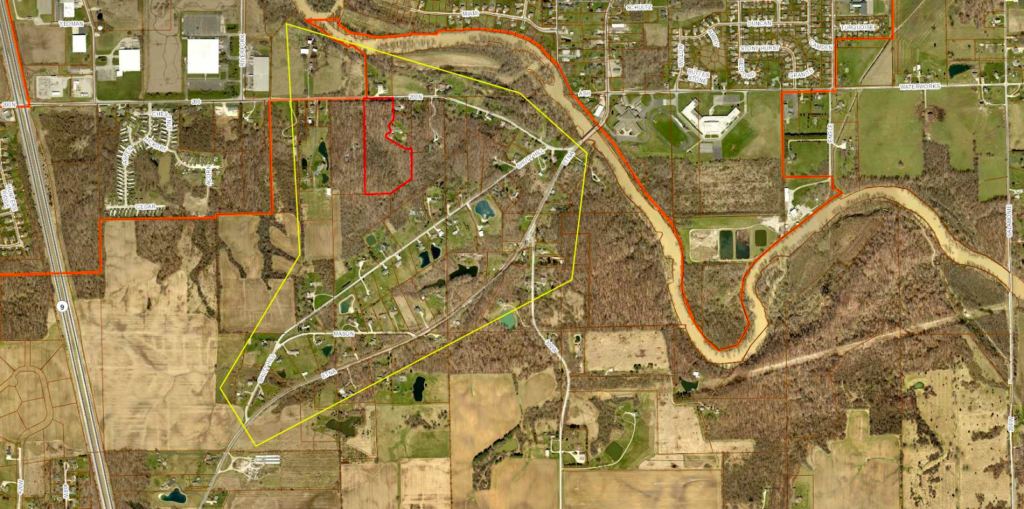
3. An area SE of Lake Forest Subdivsion, on the north edge of the Huntington city limits. Clear Creek Rd between Skyline Subdivision and 600 N, 300 W between Crown Hill Subdivision and 600 N, and 600 N between Clear Creek Rd and 300 W. Some of the homes along Clear Creek Rd definitely have discharging systems, others along 600 N were constructed on lots with room for only one septic system, some of the homes have been there for nearly 20 years and the systems are nearing the end of their usable life.
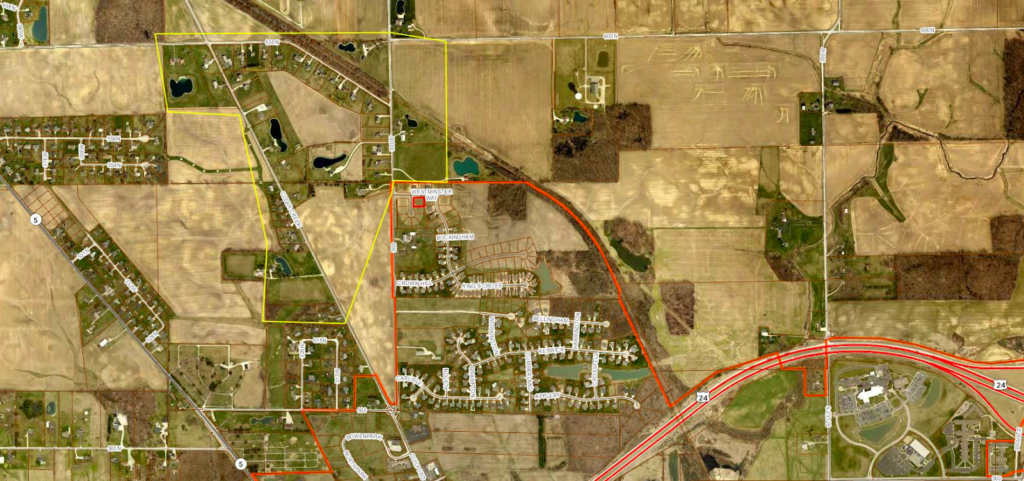
4. Bowerstown (Intersection of Riverside Dr, 400 N and 100 E). Roughly 20 dwellings, could run a line west to town and pick up all the properties on Riverside Dr, which is a shallow bedrock area and group with the area I have listed at #5.
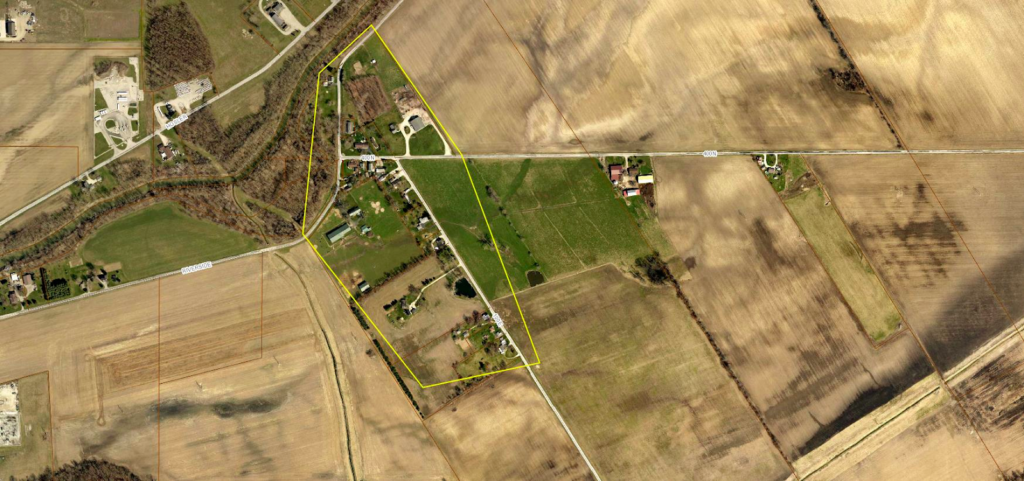
5. This is probably the largest area: The boundaries of the SE corner of the city limits of the city of Huntington. Evergreen Rd between Waterworks Rd and E Taylor St. SR 5 between the municipal airport and SR 224, Aero Landings subdivision between the airport, SR5 and SR 224 (just went through final plat approval, most houses not yet built). SR 224 between Evergreen Rd and the east edge of Aero Landings. Broadway between SR 224 and Riverside Dr. E Taylor between Evergreen Rd and Meridian Rd. Rolling Acres Subdivision off of E Taylor St (43W, 35W, 280N). Unnamed subdivision off of E Taylor St (80W). Riverside Dr possibly run a line down the road to Bowerstown.
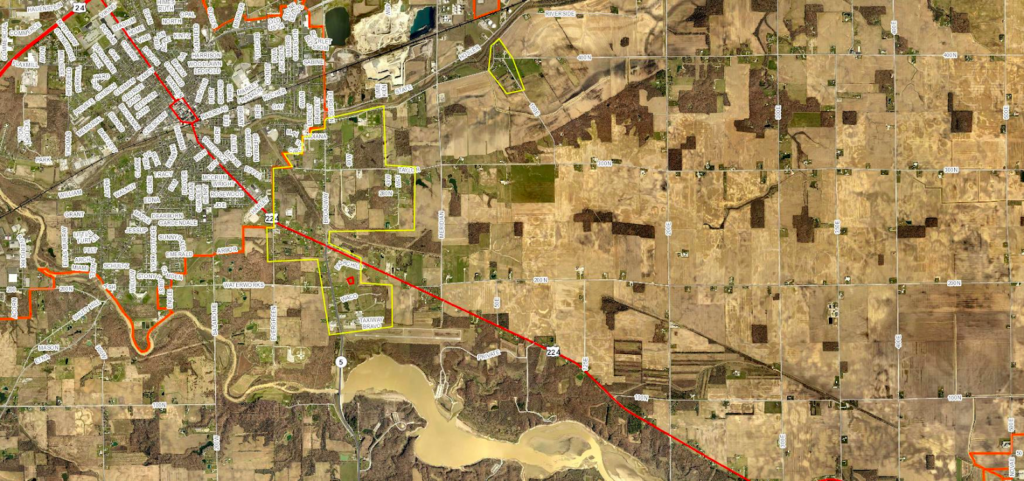 6. Majenica (Intersection of SR 5 and 400 S) Roughly 35 dwellings, a church and a few businesses.
6. Majenica (Intersection of SR 5 and 400 S) Roughly 35 dwellings, a church and a few businesses.
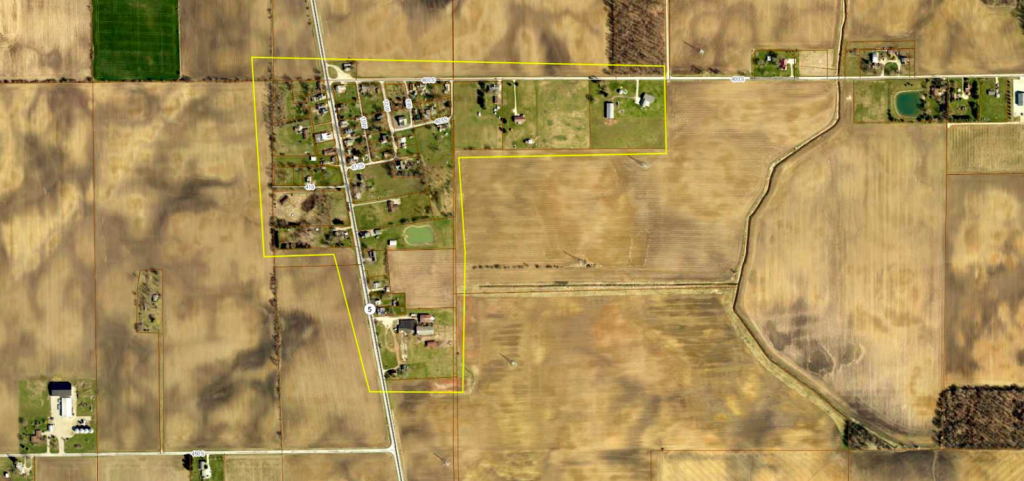
7. Goblesville (1100 N and 300 W). Roughly 25 dwellings, a church and a large golf course.
 8. Banquo (900 S and SR 105). 2 churches and roughly 24 dwellings.
8. Banquo (900 S and SR 105). 2 churches and roughly 24 dwellings.
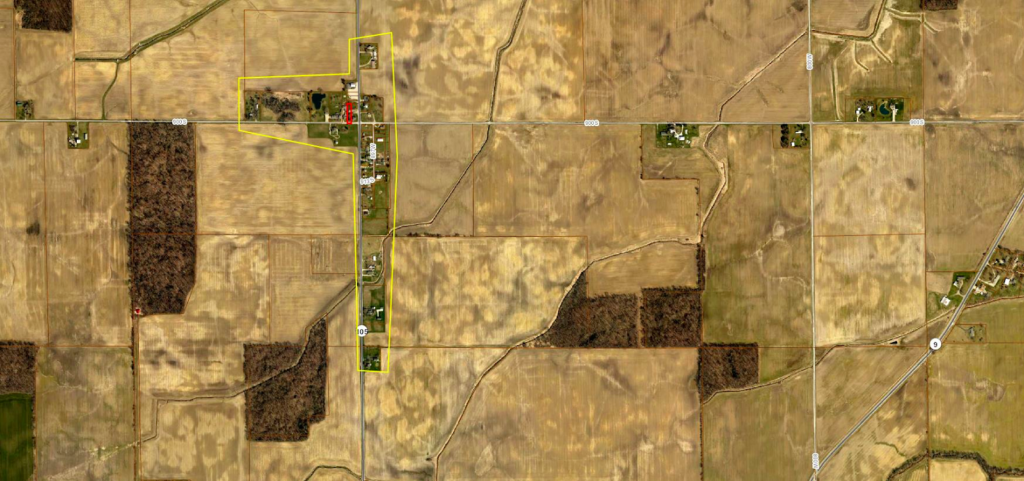 9. Rock Creek (SR 124 and 600 S). 1 warehouse and roughly 12 dwellings.
9. Rock Creek (SR 124 and 600 S). 1 warehouse and roughly 12 dwellings.

The new RSD could work closely with the county health department, the county commissioners and the new county redevelopment commission to make intelligent investments in future sustainability and growth. For example, the commissioners could fund the completion of preliminary investigative reports at the cost of under $8 thousand each (sometimes as low as $2-3 thousand) instead of funding infrastructure emergencies. The commissioner role in funding these endeavors is appropriate for startup and planning costs as opposed to emergency rescues for operating shortfalls.
One RSD to work with is ideal for all parties involved in Huntington county.

